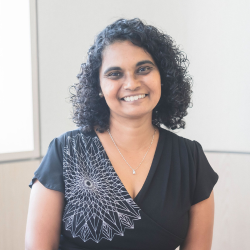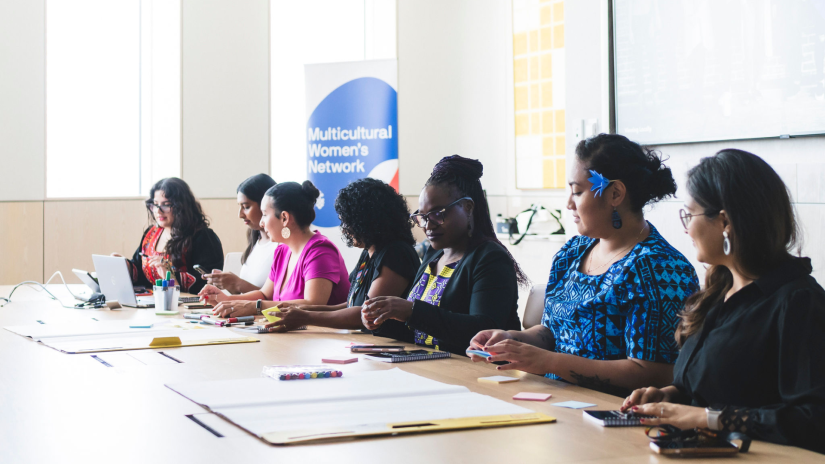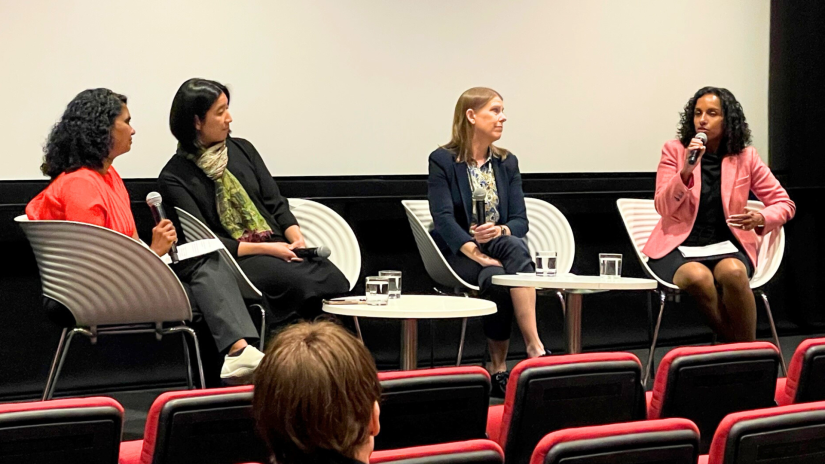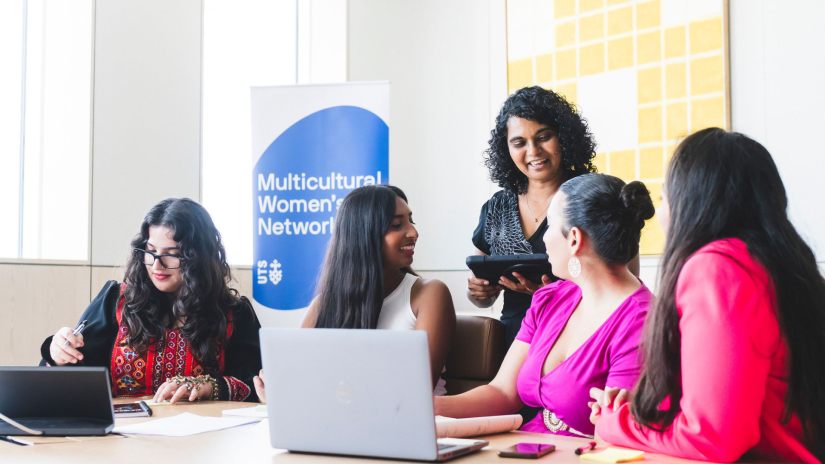Leaders reimagined
Reimagining what leaders could be with Dr Kumi de Silva.

Dr Kumi de Silva
I’ve been reimagining what leaders could be like. Let’s be clear, though: My imagination here is narrowly focused on leaders in key decision-making roles or, as the Workplace Gender Equality Agency (WGEA) puts it, someone who represents at least one of the organisation's major functions and participates in organisation-wide decisions with the CEO.
I imagine someone brown, someone with hair that is uncontrollable in humid conditions, someone who pauses at the gender tick-box when filling out surveys, someone whose ancestors have lived in Australia for tens of thousands of years. Many of these leaders would be at my imaginary table, making key decisions that will impact workplace practices. But let’s pause before I get far too carried away.
According to the Workplace Gender Equality Agency
The WGEA CEO spoke recently about Accelerating gender equality in Australian workplaces saying that we need to reimagine what senior leaders and managers look like to achieve equality. WGEA advocates for supporting employees with a range of life experiences. Every year companies with more than 100 employees are required by law to report on the profile of their workforce, including the binary gender identity of staff in different roles, salary details and their provisions for parents and carers. Having policies or strategies that support gender equality is only the start to achieving gender equity.
That well-known and somewhat overused quote, What gets measured, gets managed has a point. Data is key to achieving equity but the critical question to pose is, do we have the correct data to achieve equitable workplaces? It’s not simply that organisations may lack systems to collect other intersectional data, but employees may be reluctant to provide this information, not knowing how it will be used. Data-gathering exercises require trust and transparency. If staff aren't motivated to share, it will form a somewhat hazy picture of the organisation's workforce diversity.
Data is key to achieving equity but the critical question to pose is, do we have the correct data to achieve equitable workplaces? It’s not simply that organisations may lack systems to collect other intersectional data, but employees may be reluctant to provide this information, not knowing how it will be used.

Women from the UTS Multicultural Women's Network
There are other layers to these reimagined leaders of mine that may remain hidden but will contribute to making our workplaces richer. They could be migrants, wanting to work part-time to achieve that elusive work-life balance, or have come through the public education system. Surely a workplace that is led by such unconventional key-decision makers would make key decisions that would allow people like themselves to thrive? You may question why I’ve called them ‘unconventional’. Of course, I don’t know if using this term is accurate. We don’t have the data to clearly show that these key decision-makers accurately reflect the workforce. But I’ve got a hunch it doesn’t.
There are glimpses into this data. In 2022-23, when women made up 51% of the workforce in Australia, 22% of CEOs and 37% of key decision-makers were women (WGEA). In 2022, the Diversity Council Australia (DCA) reported that while 47% of non-corporate board directors were women, 5.7% were women of non-Anglo Celtic origin. I think a vast amount of reimagining is needed.
Diversifying leadership
Last year, I spoke to some exceptional women about different styles of leadership. They pondered on the influence of their personal and professional experiences on how they led teams. They spoke about creating a shared vision. Reflecting on their own journeys they acknowledged that people will have various life priorities and that, inevitably, these will change over time. They spoke about giving team members equal access to opportunities, or in other words, that equity was important.

Dr Kumi de Silva, Associate Professor Eva Cheng, Professor Peta Wyeth and Associate Professor Ramona Vijeyarasa speaking at The Leadership panel event.
WGEA’s primary metric for evaluating effective change in the workforce is the Gender Pay Gap. If participation in the workforce by the binary genders is similar, then the Gender Pay Gap should be minimal. The Gender Pay Gap is a number that is a proxy for gender inequality. But, will that hold true for those with different experiences in life beyond their gender identity? From Kimberlé Crenshaw’s definition of the term intersectionality, we understand that multiple forms of inequality can have cumulative disadvantages for some. From the DCA data I mentioned earlier, we can see that we need a better understanding of our proxies for equality.
We are adamant that the ATAR is only a number and that it doesn’t define who you are or what you might be in the future. Why don’t we apply some of our excellent advice to the Gender Pay Gap? It doesn’t define the culture of an institution, does it? But we can’t simply ignore the number completely; we need to stride courageously towards a future when it is close to zero. You may not agree with me, but within our current systems, I do think a high ATAR provides easier access to opportunities for those who don’t have sufficient social capital.
How can we measure ethnicity pay gaps?
Analysing ethnicity pay gaps will be complicated. While Australia is home to the world’s oldest continuous culture, Indigenous people make up less than 4% of the population. At an institutional level, most organisations will be unable to report on an ‘Indigenous pay gap’ without likely compromising confidentiality. Australia is also a multicultural country where 1 in 4 people were born overseas, and 1 in 2 have an overseas-born parent (Australian Bureau of Statistics).
While there are guidelines, there is no standardised format for grouping ethnicities in Australia. How we are categorised by data collectors and how we self-identify can be different. The ‘cultural diversity’ question will have to vary to suit the purpose of data collection. If we want to know the diversity of the workforce, then the question most likely should reflect ethnicity. Given the ABS data, we should have options to select more than one ethnic category. Proficiency in languages other than English could provide more granular information. If the intent is to evaluate the propensity for discrimination, then a more nuanced approach is required.

UTS Multicultural Women's Network members
This may be where the term CARM or culturally and racially marginalised, which is being encouraged by DCA, may be more relevant. Within an Australian context, this is defined as people who are Black, Brown, Asian or any other non-white group who face discrimination due to their race, culture and/or background. We need to be better at normalising collecting data not only around ethnicity but also on caring responsibilities (not solely focused on dependent children), disabilities and LGBT+ identity, to name a few. We cannot simply make this reporting mandatory. We need to build trust, explain clearly why the information is needed, how the data is to be used, and critically report back on insights gained; if there are equity gaps, what will be done to address them?
We need to be better at normalising collecting data not only around ethnicity but also on caring responsibilities (not solely focused on dependent children), disabilities and LGBT+ identity, to name a few. We cannot simply make this reporting mandatory. We need to build trust.
In the UK, where the gender pay gap for individual organisations has been published for several years, this gap has been reducing annually in higher education institutions. A review of the most recent 5-year period notes that, broadly speaking, institutions with a low gap have a deliberate focus on gender parity, action plans and leadership commitment, while others were more likely to have an acceptance of societal norms. Of the eight report recommendations, one that stands out is that institutions should monitor their pay gaps more broadly than by gender alone and include other intersections, such as ethnicity and disability.
There have been many times I’ve been told we need to ‘fix’ the gender issue first before we tackle other intersections. The UN says that it will take about 130 years to close the global gender equality gap – I can’t wait that long. Projections for Australia are better at 26 years – that’s still beyond my career span. I’d rather not have to go back to relying on my imagination. I would like to know that organisations are strategically considering various intersections of their diverse workforces and are reporting on equity gaps beyond gender to evaluate the impact of said strategic priorities. We need to do more to support minoritized groups so that those imagined unconventional key decision-makers are realised.
I would like to know that organisations are strategically considering various intersections of their diverse workforces and are reporting on equity gaps beyond gender to evaluate the impact of said strategic priorities. We need to do more to support minoritized groups so that those imagined unconventional key decision-makers are realised.
However you see yourself, the next time you are asked to divulge personal information about yourself, like whether you have a disability, are a carer, or identify with a minoritized group, stop. Reflect on why these questions are being asked. Will revealing this information be likely to drive action for change? Go on—don’t click on ‘prefer not to say’! If decision-makers are not seeking this information, ask, 'Why not?'
Be the change you want to see.
